Content
Cette page est aussi disponible en français
Some of the works in the Fonds d'art contemporain - Paris collections have a sports theme, or are inspired by it. The "collection municipale", which supports contemporary artistic creation, presents a selection of works based on this theme. Some of them are exhibited as part of the Cultural Olympiad in several venues. Find out more below.
From strict representation to more conceptual forms, the "collection municipale" illustrates the evolution of athletic bodies in motion, that are sources of inspiration for artists.
Depiction of bodies in the throes of physical exertion have existed since the very origins of art. As far back as ancient times, statues, vases, mosaics and wall frescoes have honored athletes. The geometry of the body, protruding muscles and the beauty of movement remind us of the need for perfect harmony between body and soul.
From the 19th century onwards, the depiction of sport in art started to reappear. The aim was to celebrate bodies in motion, physical effort and the advent of outdoor leisure activities.
Contemporary art pursues this depiction of reality, renewing the genre through the use of contemporary techniques and approaches.
Contemporary techniques and materials
Epsylon Point
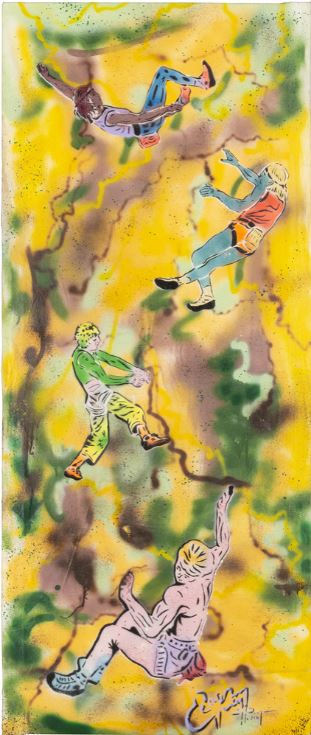
Epsylon Point (Étienne Lelong), "Les Grimpeurs libres", circa 1990
Crédit photo :
© Adagp, Paris
In the 1990's that the urban art pioneer Epsylon Point, painted Les Grimpeurs libres, which is now installed in the Léon-Mottot gymnasium (17, cité Moynet, 12e) as part of the "Ex-aequo: 24 œuvres dans 24 centers sportifs" project.
The painting depicts four climbers making an ascent. The wall, a colorful abstract background, is both street artist's canvas and the athletes climbing wall.
Climbing, which made its debut at the Tokyo 2021 Games, will be also be present at the Paris 2024 Games.
Xavier Veilhan

Xavier Veilhan, "Grande Machine lumineuse, le Plongeon", 2003
Crédit photo :
© Veilhan / Adagp, Paris
Swimming is represented in this exhibition thanks to Xavier Veilhan and his Grande Machine lumineuse, le Plongeon. This piece is part of the Light Machine series of short films.
These sets of panels, made up of light bulbs fitted all over a grid, like pixels, form a low-resolution image. It depicts the silhouette of a diver. The pictures were taken during a training session for the junior women's national diving team.
Shapes are move around depending on the viewers distance from the piece. The artist questions our relationship with images and technology.
This work was commissioned by the City of Paris in 2005.
Géraldine Pastor Lloret
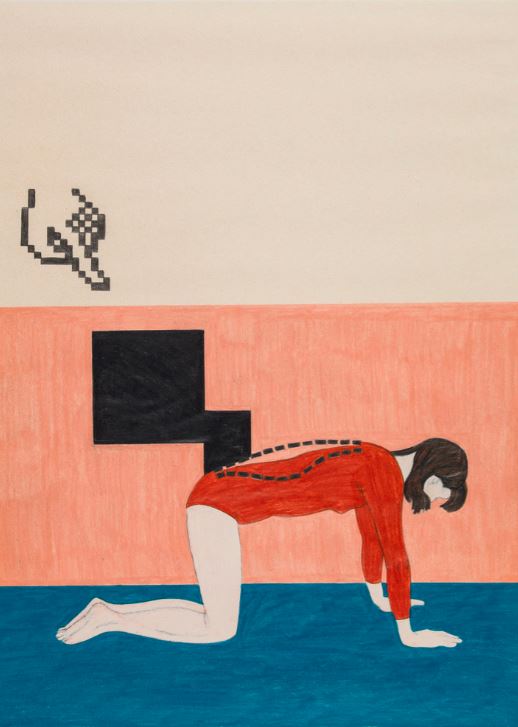
Géraldine Pastor Lloret, "Le Corps actif", 1997-1998
Crédit photo :
© Géraldine Pastor Lloret ©Alexandra Llaurency/Parisienne de Photographie
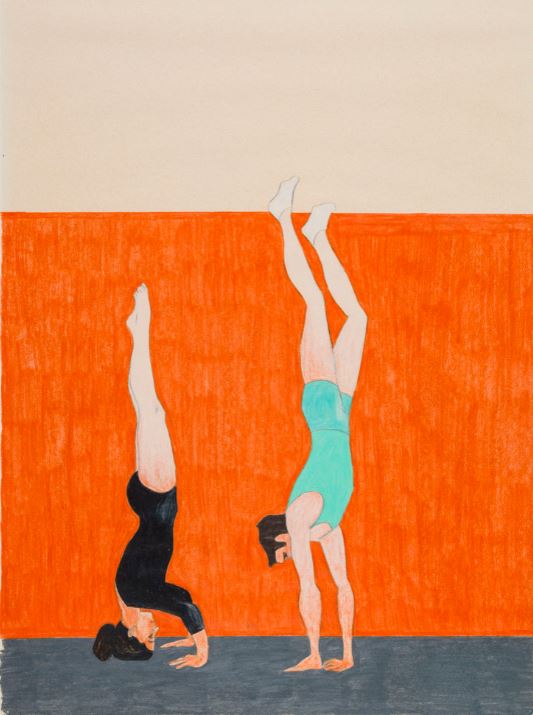
Géraldine Pastor Lloret, "Le Corps actif", 1997-1998
Crédit photo :
© Géraldine Pastor Lloret ©Alexandra Llaurency/Parisienne de Photographie
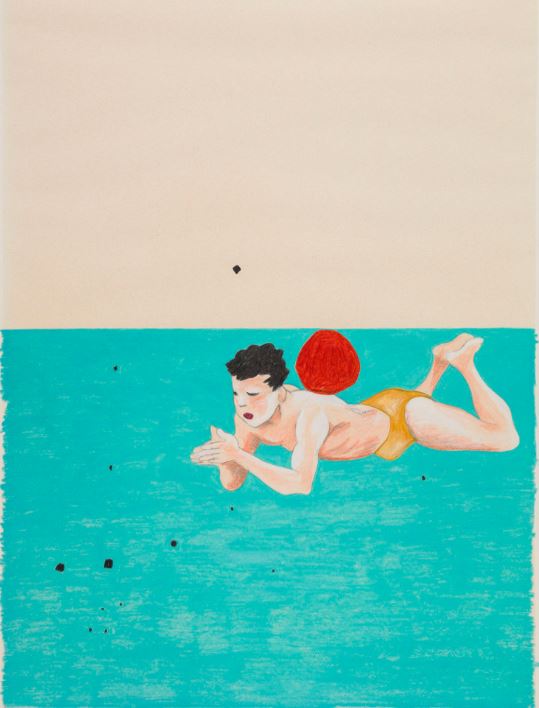
Géraldine Pastor Lloret, "Le Corps actif", 1997-1998
Crédit photo :
© Géraldine Pastor Lloret ©Alexandra Llaurency/Parisienne de Photographie
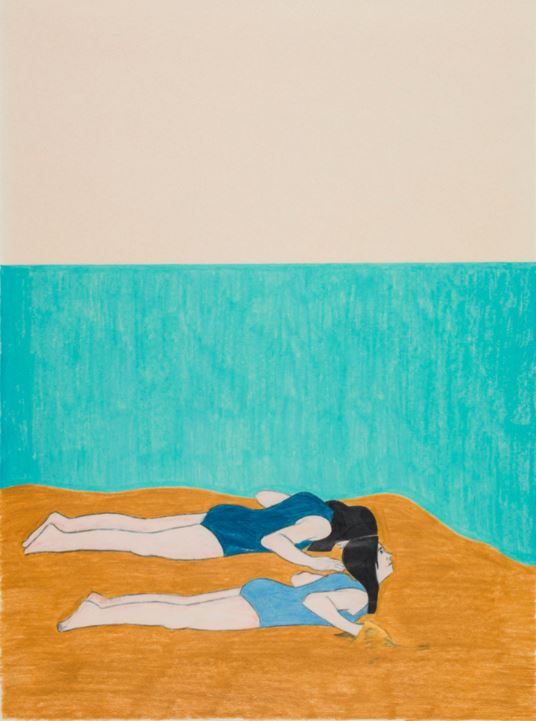
Géraldine Pastor Lloret, "Le Corps actif", 1997-1998
Crédit photo :
© Géraldine Pastor Lloret ©Alexandra Llaurency/Parisienne de Photographie
In the series Le Corps actif, Géraldine Pastor Lloret shows, not without humor, bodies in various postures in water, doing gymnastics or yoga. The aim is to show human bodies as they are. The characters, shown in various situations and strange poses, appear isolated in their own universe.
Women's rights through dance
Virginie Barré
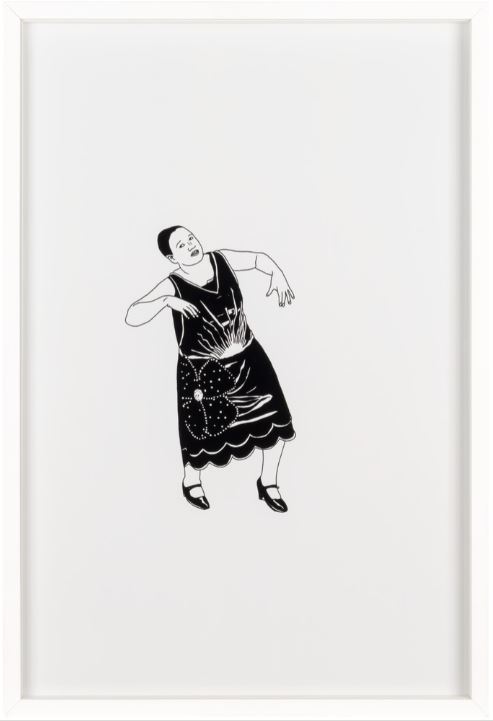
Virginie Barré, "Bee Jackson, world charleston champion", 2005
Crédit photo :
© Adagp, Paris © Hélène Mauri
With Bee Jackson, world charleston champion, Virginie Barré pays tribute to the woman who popularized the charleston in New York and ultimately made a living from it.
Invented in the United States by the African-American community, this dance reflects the historical context of the 1920s and women's emancipation. Women began to have more freedom and showed this by wearing shorter clothes, which made it easier for them to dance and move around.
The artist drew inspiration for her work from historical photographs.
Mélanie Manchot
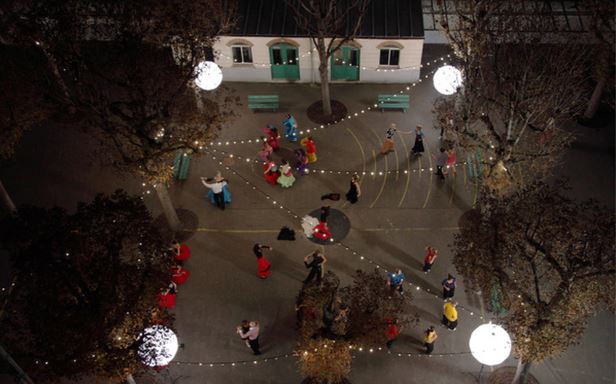
Mélanie Manchot, "Dance (All night Paris)", 2012
Crédit photo :
© Adagp, Paris
For her video Dance (All night Paris), Mélanie Manchot invited amateur and professional dancers to take over the guinguette-like courtyard of a Parisian high school. They move to the sound of music broadcast through their headphones to conjure up a ballet of a dozen different dances: from tango to waltz, rock and breakdance - a discipline making its debut at the Paris 2024 Games.
Each participant is identifiable by the codification of their gestures or clothing. The piece also refers to the popular balls of the 1940s and 1950s. A way for the artist to reveal the role of dance within society. The choreographies intermingle without merging in the same space, like different communities living side by side.
Kenny Dunkan
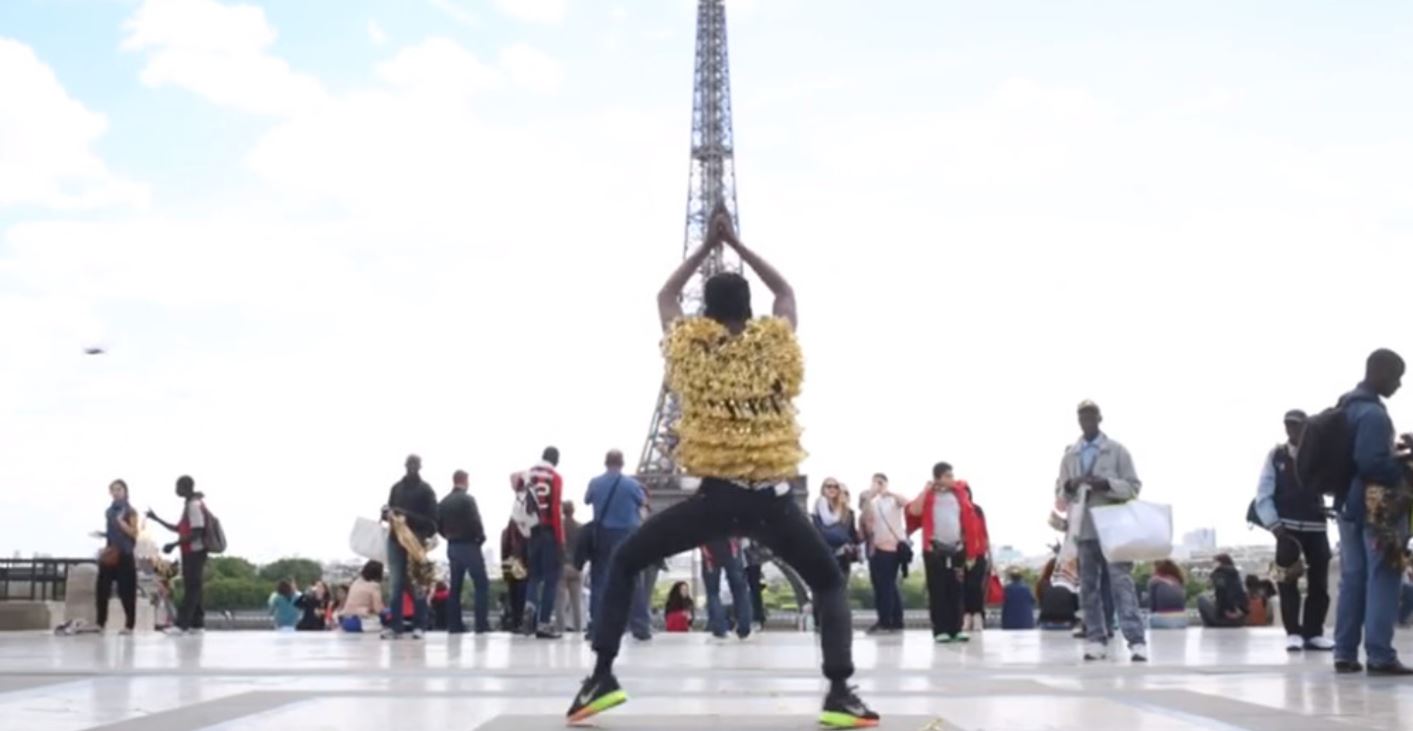
Kenny Dunkan, "UDIVINMECRAZ", 2014
Crédit photo :
© Kenny Dunkan, 2015
In the UDRIVINMECRAZ video , Kenny Dunkan dances on the Place du Trocadéro, in front of the Eiffel Tower, as tourists look on in amazement and amusement. His choreography is inspired by traditional Guadeloupean dances, reminiscent of carnival parades. The artist wears an ornamental sculpture made up of Eiffel Tower-shaped key rings, a nod to the place and its vendors.
The clattering of knick-knacks, the rhythm and duration of the dance, which gradually becomes a real physical ordeal, paves the way for a form of contemporary, urban trance.
The video raises complex questions of identity, in a simple and fun way, notably about the place of young black men in our post-colonial society.
Sabrina Belouaar
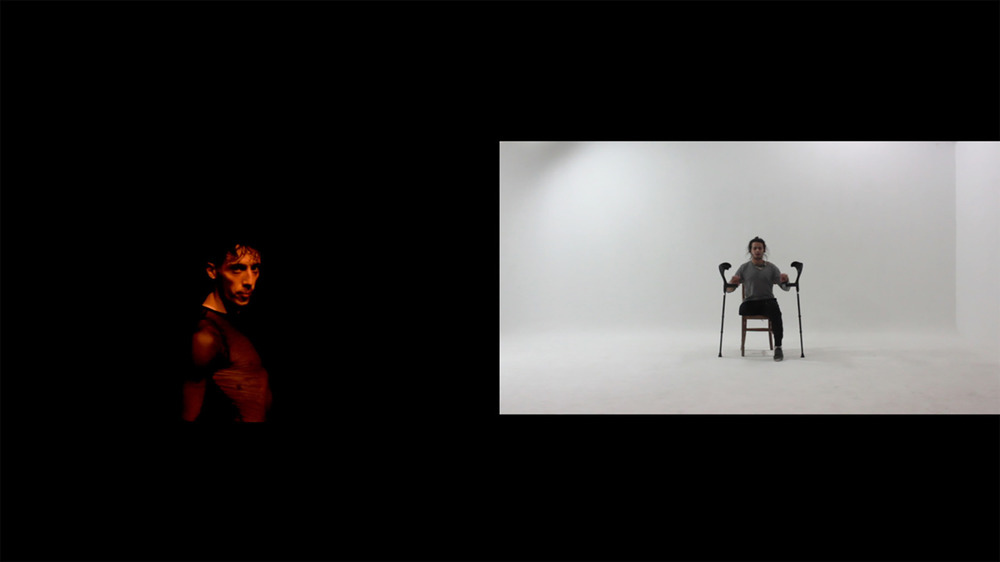
Sabrina Belouaar, "Battle", December 2017
Crédit photo :
© Adagp, Paris
In her video Battle, Sabrina Belouaar borrows from an art-historical format - the diptych - which she reinvents through the performative practice of a dance battle. Synonymous with hip-hop culture, this dance confrontation generally pits two performers against each other, until one of them gives up.
Here, however, the contents is more of a struggle than of a confrontation. The two dancers, Gwendal - a homosexual - and Brahim - a childhood amputee - are fighting to assert their identity.
Culture, heritage, new city projects, Olympic Games, good deals…
Default Confirmation Text
Settings Text Html
Settings Text Html
Hijacking sports equipment
The modern depiction of sport in art is no longer based on the image of the body in action, as it once was, but rather on objects, forms, gestures and spaces associated with its practice. As a result, balls, jerseys, flags and trophies have become the very material of certain pieces.
Jacques Julien

Jacques Julien, "Patère #1", 2019-2021
Crédit photo :
© Adagp, Paris © Hélène Mauri

Jacques Julien, "Les Figurants #8", 2021
Crédit photo :
© Adagp, Paris © Hélène Mauri
The "Fonds" owns two sculptures by artist Jacques Julien: Les Figurants #8 and Patères #1. These pieces are on show at the Jacqueline-Auriol sports center (7, allée Louis-de-Funès, 8e) as part of the "Ex-aequo: 24 œuvres dans 24 centers sportifs" project.
Jacques Julien works mainly by assembling and manipulating fragments of equipment and objects, many of them taken from sport. By playing with scale and confronting textures, he creates poetic pieces tinged with humor, a nod to Marcel Duchamp.
In Les Figurants #8, the artist plays with a pedestal, a piece of equipment often taken for granted. Produced during a residency at Villa Medici, the work is inspired by the classical sculptures in the garden.
Patère #1 is part of a wall-mounted series. It's an analogy between the coat hook, the wall-mounted, footless coat rack, and the game of darts or Mikado.
Richard Fauguet
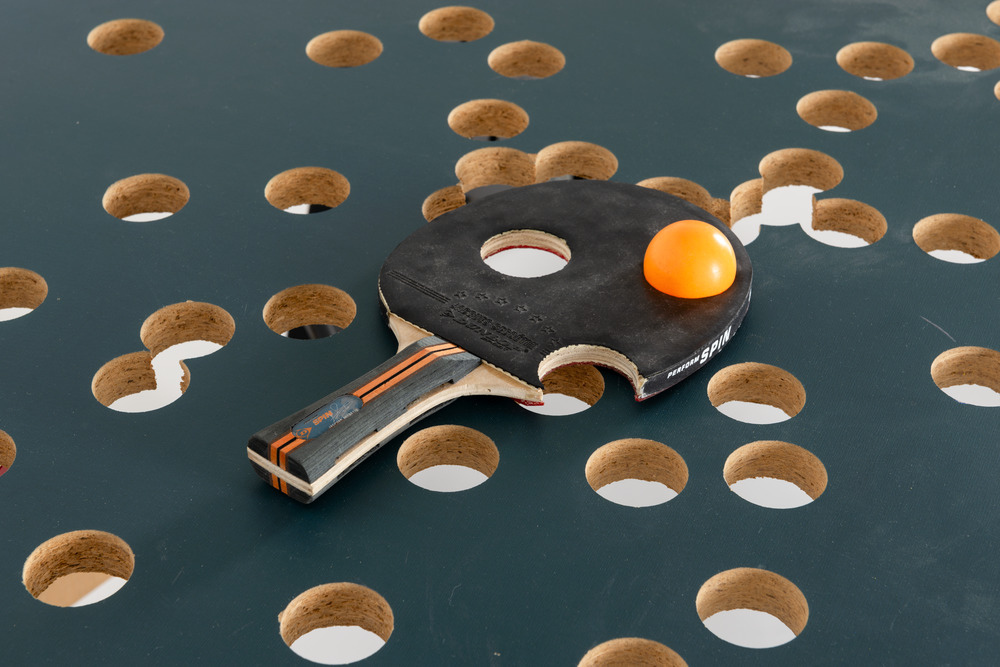
Richard Fauguet, "Untitled (ping-pong table)", 2001
Crédit photo :
© Richard Fauguet
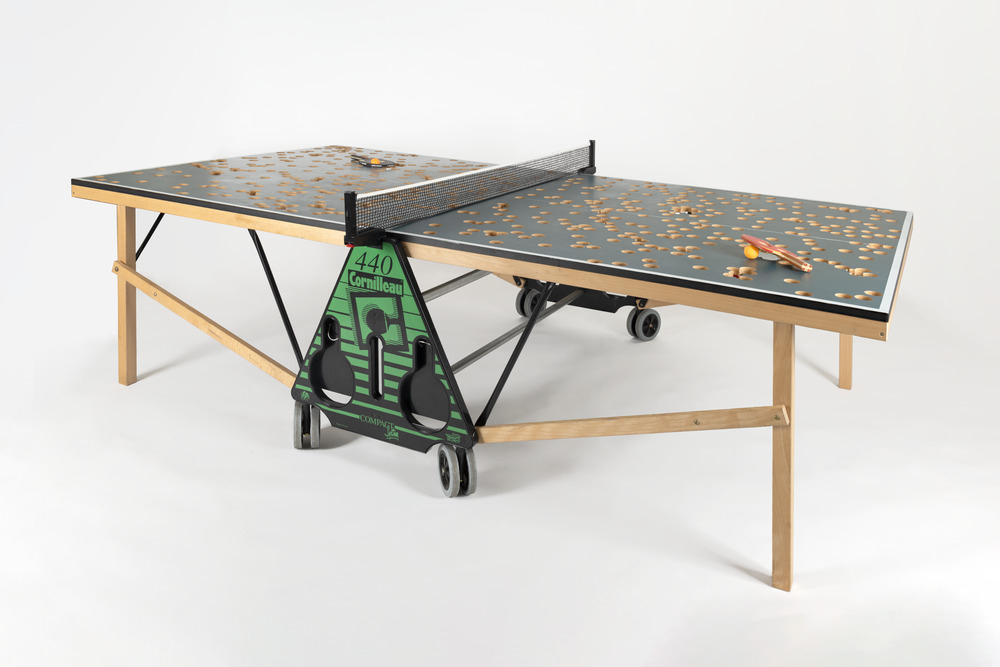
Richard Fauguet, "Untitled (ping-pong table)", 2001
Crédit photo :
© Richard Fauguet
In Sans titre (table de ping-pong), Richard Fauguet seems to turn reality on its head. Both the table and the bat have been perforated with ping-pong ball sized holes, it's quite surreal.
The artist shows us what is not usually visible: the ball's trajectory and bounces. Thus, this ping-pong table almost remembers the game, and leaves its outcome to the imagination of the viewer.
Tom Shannon
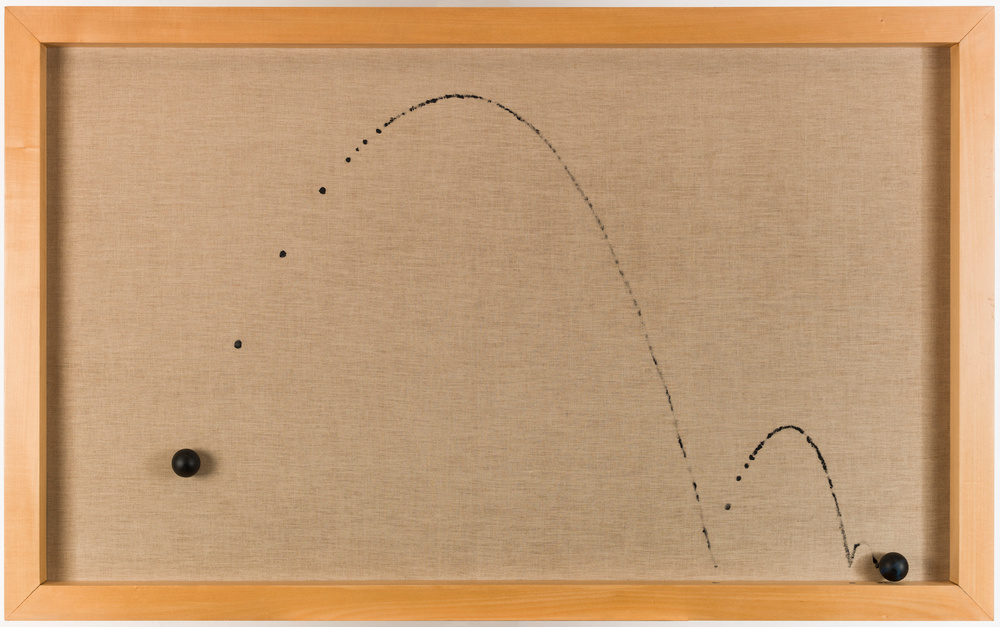
Tom Shannon, "Bell Ball", 1988
Crédit photo :
© Tom Shannon
On a linen canvas, Tom Shannon illustrates the bounce of a rubber ball. The ball's trajectory is made visible with the stroke of a brush. The piece, Bell Ball, is part of a series of paintings, Trajectories, produced between 1973 and 1989. It illustrates one of the artist's major obsessions: magnetism, upon which the forces of gravity and weightlessness depend.
The term magnetism refers to all physical phenomena in which objects exert attraction or repulsion on other materials.
Prosper Legault
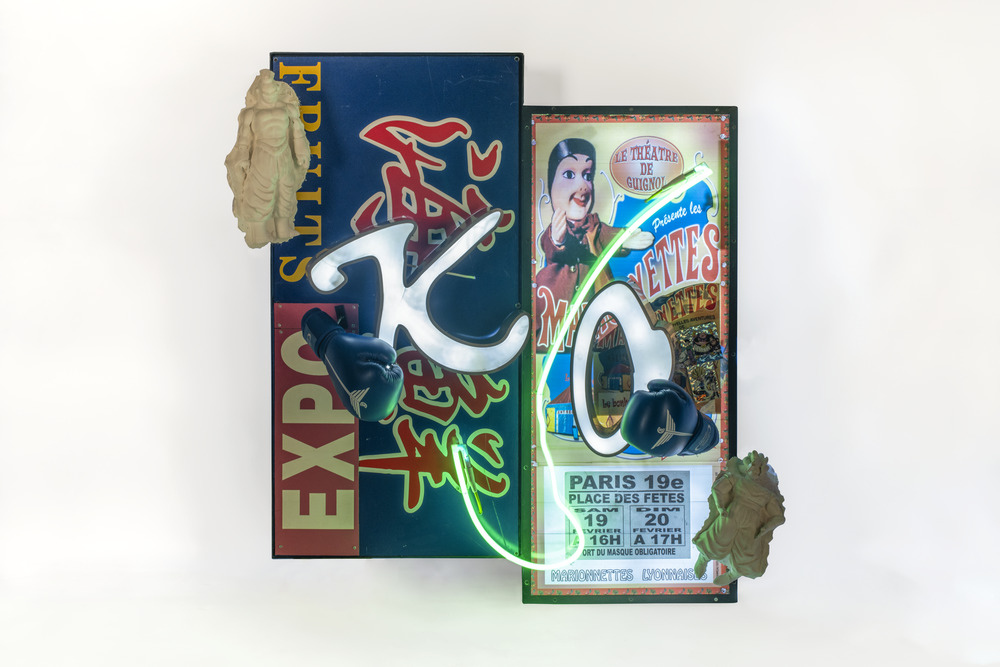
Prosper Legault, "Knock Out", 2022
Crédit photo :
© Adagp, Paris © Hélène Mauri
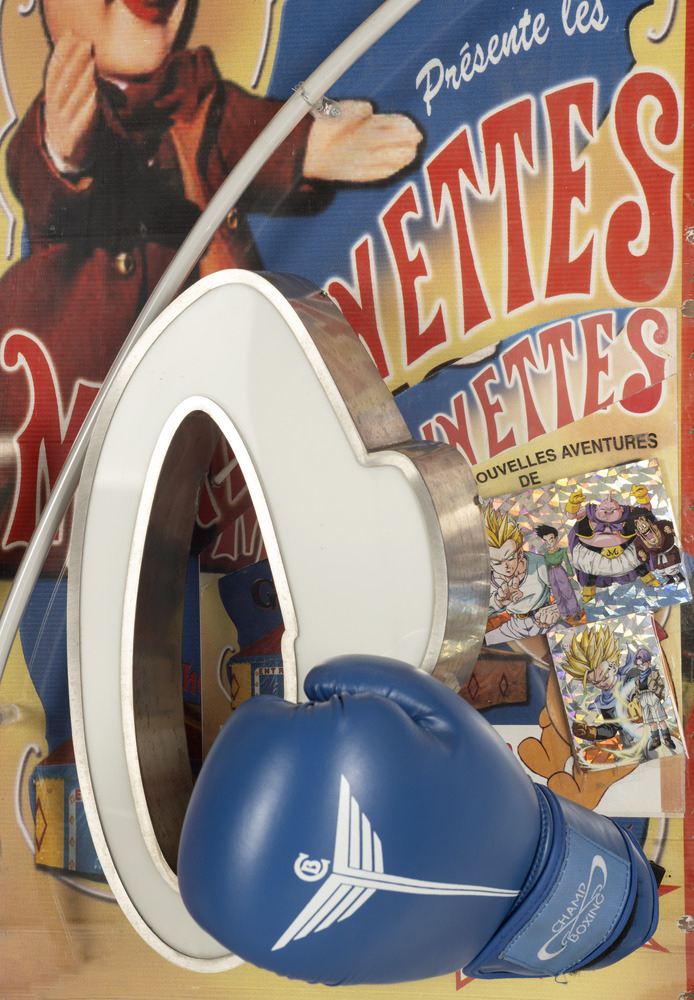
Prosper Legault, "Knock Out", 2022
Crédit photo :
© Adagp, Paris © Hélène Mauri
Knock Out, by Prosper Legault, depicts a fictional battle using Dragon Ball manga characters and imagery with boxing gloves.
The artist collects abandoned advertising and signage panels, neon lights and signs. He brings them back to life by assembling them, creating composite sculptures and installations. These works blend symbols, scripts and languages in new juxtapositions that are damaged, then repaired and revitalized by their new use.
Laurent Duthion

Laurent Duthion, "Caméra musculaire", 2005
Crédit photo :
Ville de Paris
For Caméra musculaire, Laurent Duthion attached a Bolex H16 camera to the dial of a bicycle. Image recording is triggered by the rotation of the front wheel. The camera is framed according to the bike's inclinations and movements. It takes more or less images depending on the speed at which the bike is moving.
The bike has an average speed corresponding to 24 frames per second, the average speed of a cyclist in town. Every time the speed rises above this value, the film shows a slow-motion image, while every time it falls below it, the film shows an accelerated image.
The artist has also made his work available to cyclist-directors, artists, professional cyclists or anyone else wishing to use it to create a film.
Bruno Peinado

Bruno Peinado, " Influence, Rainbow warriors," 2003
Crédit photo :
© Adagp, Paris © Hélène Mauri
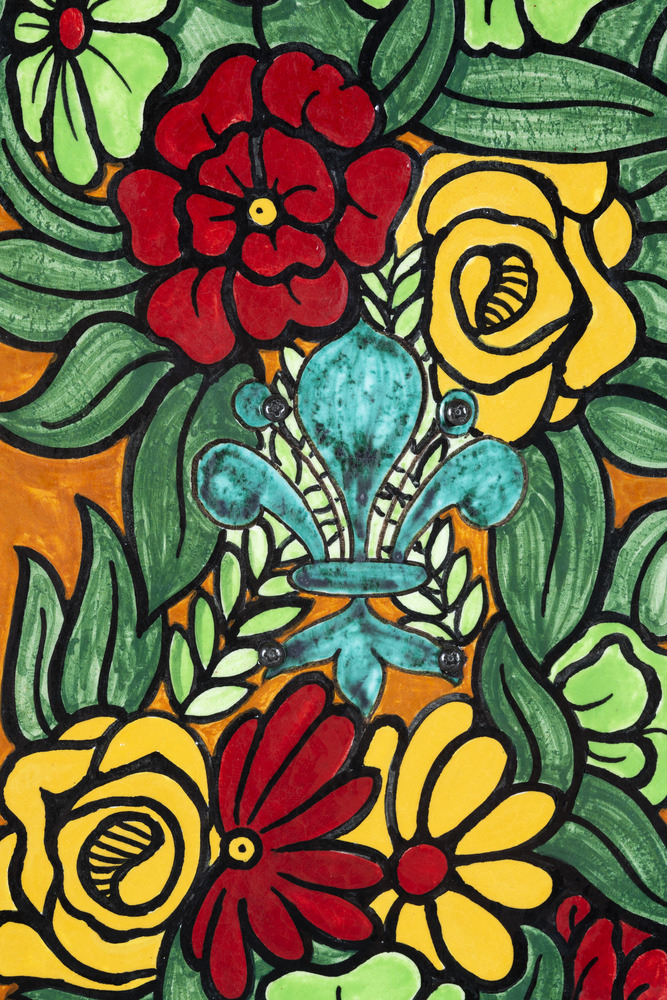
Bruno Peinado, " Influence, Rainbow warriors," 2003
Crédit photo :
© Adagp, Paris © Hélène Mauri
Skateboarding, an Olympic discipline since 2020, has a special place in the collection. Bruno Peinado produced a set of earthenware boards using ancestral techniques, called Influenza, Rainbow warriors, during a residency in Faenza, an Italian town famous for its ceramics.
The artist appropriates and diverts forms from popular culture (video games, music, cinema), classical art and marketing (advertising, brands, logos). Away from its primary function, this skateboard cover becomes a decorative object. The flowers, including a stylized fleur-de-lis, adds a touch of tackiness to the piece.
Influenza, Rainbow warriors is installed at the Jacqueline-Auriol sports center (7, allée Louis-de-Funès, 8e) as part of the "Ex-aequo: 24 works in 24 sports centers" project.
Places dedicated to sport
Olivier Masmonteil
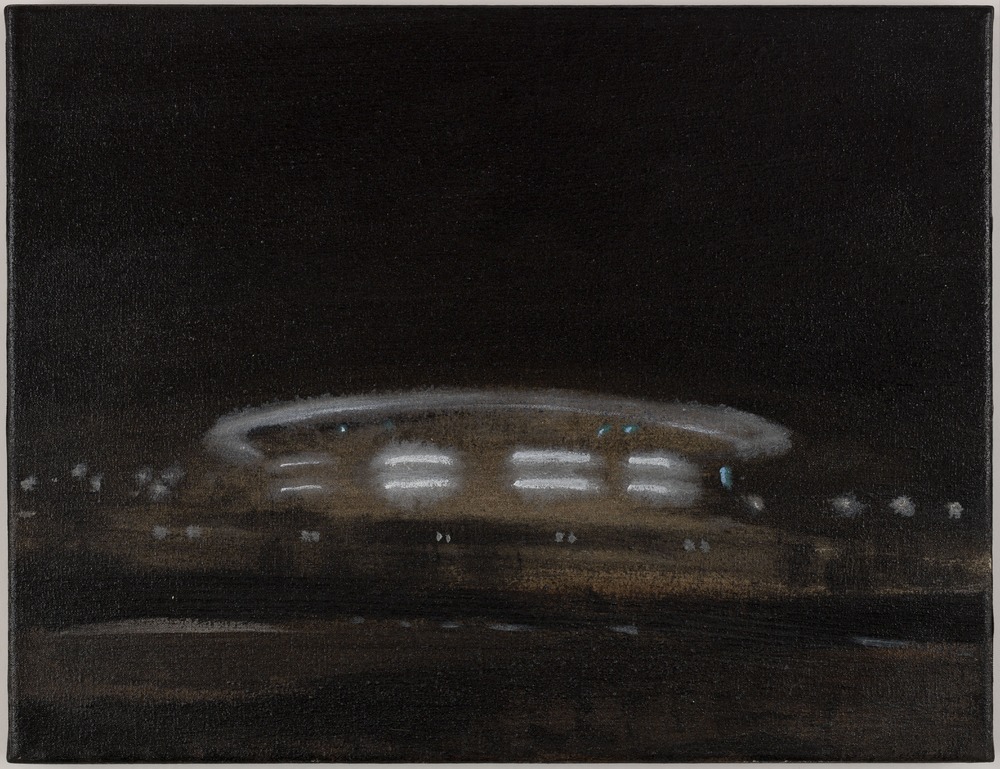
Olivier Masmonteil, "Le Stade de France, mai 2008" from the series "Quelle que soit la minute du jour", 2007-2010
Crédit photo :
© Adagp, Paris
In Le Stade de France, May 2008, Olivier Masmonteil paints the famous stadium which is the largest in France. This work is part of the Quelle que soit la minute du jour series, a collection of 1,000 landscape paintings of identical format (27 x 35 cm), created between 2007 and 2010.
The first paintings in the series are landscapes of the Corrèze region, taken from the artist's childhood photo albums. Wishing to expand the series, the artist took a five-month trip around the world. He made quick sketches, took photographs and notes on the landscape he encountered and painted them on his return to his studio. The result is an assemblage of dreamlike, introspective landscapes. This canvas is a journey into the artists real life journey.
Elsa and Johanna

Elsa and Johanna, "A Couple of Them", 2018
Crédit photo :
© Adagp, Paris
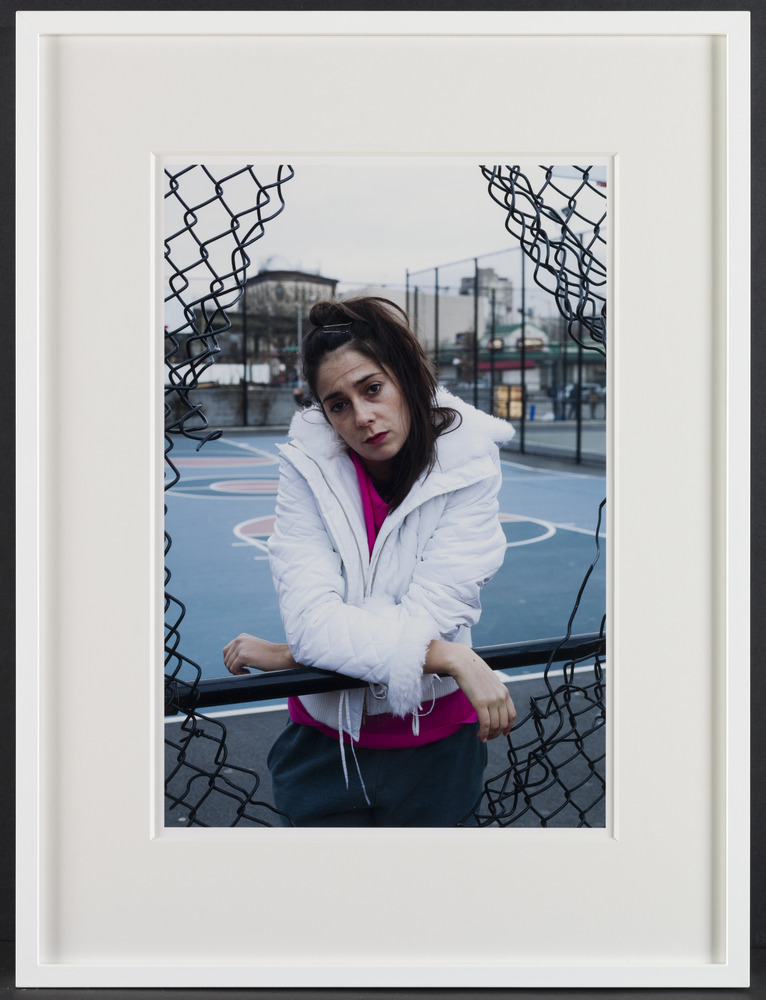
Elsa and Johanna, "A Couple of Them", 2018
Crédit photo :
© Adagp, Paris
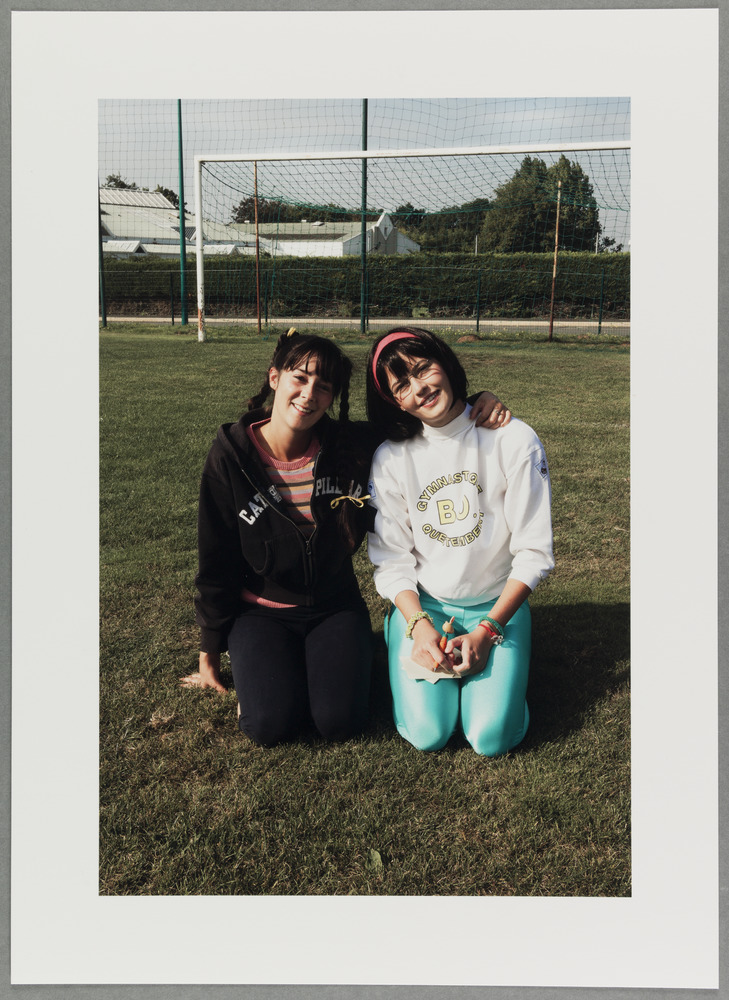
Elsa and Johanna, "A Couple of Them", 2018
Crédit photo :
© Adagp, Paris

Elsa and Johanna, "A Couple of Them", 2018
Crédit photo :
© Adagp, Paris
Photography duo Elsa and Johanna like to picture themselves at stadiums and sports grounds. Places that are usually used as backdrops for other settings. In 2014, they initiated the A Couple of Them series, an project made up of 88 portraits of characters played by the artists themselves.
The two artists adopt attitudes and postures of Western teenagers as well as stereotypical dress codes, often posing as casual spectators and nonchalant athletes.
Nicolas Moulin

Nicolas Moulin, "Novomond", 1997
Crédit photo :
© Nicolas Moulin © Hélène Mauri
Deliberately enigmatic, photographer Nicolas Moulin 's artistic approach focuses on modernity and contemporary urban spaces. His work seeks to disorientate. A skatepark, for example, is just about recognizable in this mysterious photograph, entitled Novomond.
Mixing reality and fiction, the artist guides to a kind of in-between world where landmarks fade away, leaving us to question our perceptions.
We want to hear from you!
Was this information useful to you?
Please note: we cannot reply via this form (please do not include any personal information).
